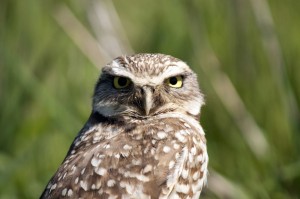The city of Livermore might be most famous for its national laboratory, but native plant enthusiasts and biodiversity advocates will tell you that the area should be just as well known for its many “botanical hot spots.” On the north side of town, one such ecologically significant area, called an alkali sink, is the habitat for one of seven remaining world populations of a rare plant called the palmate-bracted bird’s beak, as well as the federally listed California tiger salamander, Western pond turtle, red-legged frog, and vernal pool fairy shrimp.
The alkali sink near North Livermore Avenue also happens to lie on the border of the city’s urban growth boundary where environmentalists are fighting to halt a new development proposal. Although not the first time a developer has tried to build here, this is the first attempt since county voters passed Measure D in 2000, establishing an urban growth boundary that made these lands off-limits to all development other than agriculture.
Now, the builder, Pardee Homes, has proposed a ballot measure to stretch the urban limit line to build houses, schools, ballparks, and horse trails on a 1,400-acre property named Livermore Trails (www.livermoretrails.org). In February, the developer gathered 9,506 signatures, more than enough to qualify the measure for the November ballot.
Jessica Olson, conservation analyst for the East Bay chapter of the California Native Plant Society (CNPS), says this development would be “botanically devastating” because the property is also designated by the state Department of Fish and Game as a “very threatened” habitat type containing three distinctive plant communities that occur in places with saline soils and shallow groundwater—northern claypan vernal pools, alkali sink scrub, and alkali grassland. Six federally listed plants live here, including the world’s most genetically diverse population of palmate-bracted bird’s beak. Adapted to endure hot, dry summers, the foot-tall grayish green and lavender plants are covered with glandular hairs that excrete salt crystals.
While Pardee Homes has proposed a bird’s beak preserve within the development, Olson argues that the development would directly and indirectly “degrade the overall function of the sink through hydrological alterations” and other impacts from urbanization such as fertilizer use and water pollution.
This summer, CNPS volunteers will be campaigning door-to-door in Livermore. Visit www.ebcnps.org for information.

.jpg)


-300x225.jpg)
-300x225.jpg)